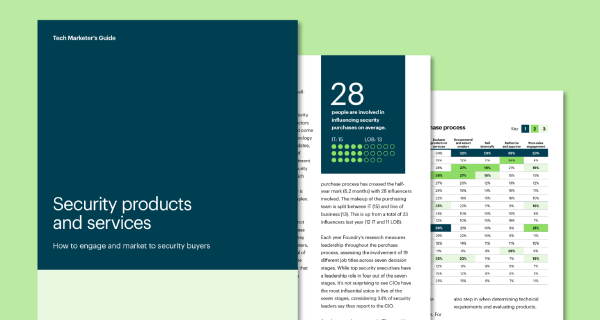Implementing ABM software can seem like a tall order. We’ve seen it all after onboarding hundreds of customers making the switch to ABM, and helping clients expand their ABM strategy. This blog is about identifying the potential roadblocks organizations face when adopting an account-based strategy as well as addressing how to fix these roadblocks. Having the knowledge to prevent any of these mishaps will allow you to see the results and the positive impact an ABM program can have on your organization.
1. Lack of executive support and knowledge of ABM
Without the support starting from the top, an ABM program can lack the resources necessary to get started. ABM programs can take a while to show results, so it could be tempting to those who don’t have faith in ABM to try to chalk it up as a failure and cut losses early — especially if they haven’t structurally changed their reporting. If you’re used to measuring MQL volume, the longer set-up time for ABM and focus on quality over quantity can cause initial concern for stakeholders.
How do you fix this?
First and foremost, it’s crucial to have conversations with executives to set program expectations and have your metrics aligned starting from the top down. ABM is a marathon — not a sprint, and the more you can convey this, the better off your ABM program will be. You don’t want to set unrealistic expectations initially. Instead you want to have a roadmap prepared for the organizational change that needs to take place to jumpstart your strategy. If you have prior experience with ABM then you can gain trust through that experience you’ve acquired. If you don’t have prior experience, I would suggest finding case studies from companies that match your market size and share the results with stakeholders. If you can show the ROI others in a similar situation have experienced, you are far more likely to get the initial support you’re looking for.
For more information on this topic check out this blog on selling ABM to your executive team.
2. Too narrow of a target audience
A common roadblock we see is companies having too narrow of a target audience once they start their ABM program. Yes, you want to narrow your target audience but sometimes applying too many layers of criteria can be detrimental. It’s important to find a happy medium of accounts that can be effectively targeted without missing out on potential opportunities.
How do you fix this?
One way to fix this is to expand your total addressable market (TAM). For example, our customer 365Talents had to broaden their TAM to uncover more opportunities. Initially, 365Talents was targeting accounts with over 10k employees and not seeing the results they wanted. After referencing their CRM data, the team decided to adjust their TAM to account with over 1k employees with a sweet spot of accounts with over 10k employees. Ultimately, this revealed a lot more opportunities for them to capitalize on.
If you aren’t seeing the quantity and quality of accounts you expect to see, make sure you reference your CRM data. This will give you a better understanding of what accounts are showing purchase signals and you can adjust your TAM from there.
For more information on this topic, check out our case study with 365Talents.
3. Too Broad of a TAL
Just as your target audience can be too narrow, your target account list (TAL) can also be too broad. If you have too broad of a TAL chances are you don’t have enough resources to efficiently engage with all of the accounts on your list. This is a clear path to missed opportunities. You can also fail to get the right messaging to accounts at the right time and may pass opportunities to competitors that have a better SDR to account ratio.
How do you fix this?
One way to fix this is to segment your large account list for more effective targeting. Some of the ways to do this consist of one, or a combination of the following firmographics:
- Geographical Regions
- Revenue
- Industry
- Growth Trends
Once you have your account list segmented, it becomes much easier to prioritize which accounts you should spend the most resources on. You can also internally audit your SDR to account ratio and adjust tactics accordingly.
4. Lack of customer insights
Without customer insights, you can’t address pain points and provide content that effectively nurtures buyers or answers customer questions. This is a common roadblock that ultimately impacts overall marketing campaigns success and in return leaves sales teams in the dark.
How do you fix this?
A great way to gain customer insights is listening to customer and prospect calls. This will give you firsthand observations on what’s going through a customer or prospect’s mind. You can also meet with your customer success team regularly to gather account insights. This will give you a better understanding of customers’ experiences and needs that are valuable when adopting an account-based strategy. Taking this a step further, you can use the customer insights you’ve gathered to create an ideal customer profile (ICP). Once you establish an ICP you can use it as a reference for future customers and address pain points more efficiently.
Check out this resource to learn how to build an ICP.
5. Lack of sales and marketing alignment
This is one of the most talked about ABM roadblocks because the foundation of a successful ABM program revolves around strong sales and marketing alignment. Without sales and marketing being on the same page you will miss a lot of opportunities. If sales sends a prospect one message while marketing is running a campaign with entirely different messaging, you’re creating confusion for potential buyers during the initial contact with sales.
How do you fix this?
Sometimes you need to start small and find a few sales reps who will be open-minded toward ABM. Alignment won’t happen overnight. Once these reps adopt the ABM strategy and see results, they can convey their success to other sales team members. This is a great way to organically grow alignment and trust in the new strategy. You need to be on top of meeting regularly to keep goals and metrics unified. If your goals become too separated and the metrics you measure are different, you’re doing yourselves a disservice. Find common ground metrics that make sense. Building this alignment can make or break an ABM program.
For more on this topic, see Nadia Davis answer, “How important is it for sales to adopt ABM + Intent?” live at B2BMX.
6. Misreading intent signals
Intent data has become fundamental in the success of an ABM program. These insights can be pipeline saviors if interpreted correctly, and if not interpreted correctly, can harm the adoption and buy-in of your ABM program. Like a lot of the roadblocks listed above, misreading intent can lead to sending the wrong messaging and ultimately causing you to miss out on potential opportunities. For instance, it can be common when adopting an ABM program to misinterpret top of funnel intent signals, such as a Bombora keyword and treating it as a bottom of the funnel signal such as a G2 competitor intent signal. It’s paramount to identify the signals in relation to an account’s position in the purchase journey and have the appropriate plan in place for each signal.
How do you fix this?
This circles back to making sure your metrics are aligned between sales and marketing so both parties can interpret the same signals. From here, you really want to have a plan of action dictating X signals equals Y action. If each signal has a predetermined plan in place you’re less likely to misinterpret these insights. It’s also worth scheduling some time with your ABM vendor’s CSM to have them explain intent signals and what ensuing action makes the most sense.
Check out our intent data FAQs for more information.
Conclusion
Remember ABM is a marathon, and preparing for the journey ahead of time is worth it. Once you identify potential roadblocks you can quickly become proactive to avoid them in the future and see quicker results. Chances are you’re not alone when you come across one of these scenarios but you’ll be better equipped to handle the situation and adjust accordingly. The upsides of ABM outweigh the potential pitfalls, and at Foundry we’re equipped with the knowledge and resources to help you overcome potential ABM failures.






